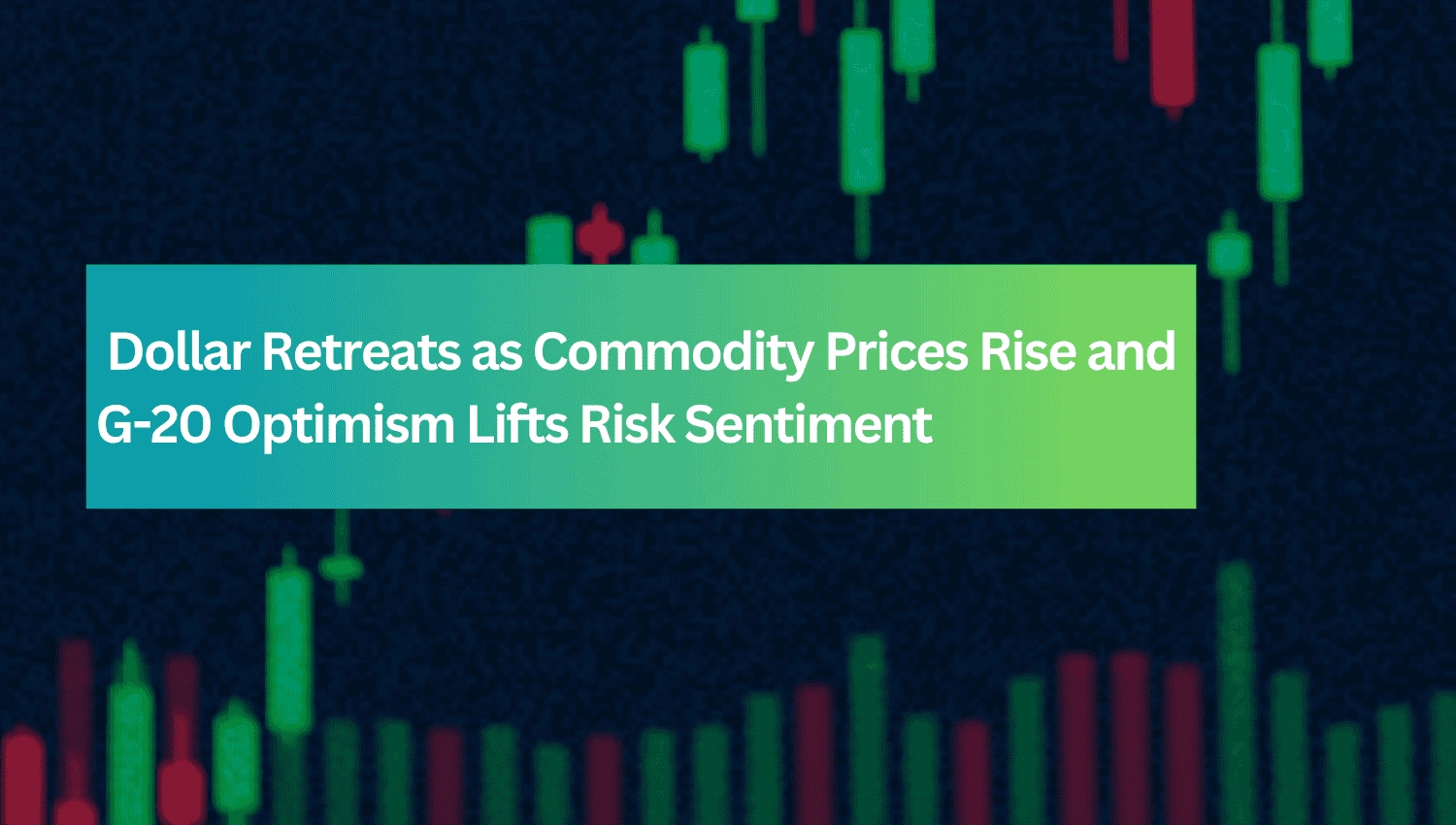Dollar Weakens Amid Profit-Taking and Commodity Price Surge

The U.S. dollar experienced a broad decline on Monday, as profit-taking ended its recent rally, compounded by rising commodity prices. The pullback in the "Trump trade" momentum added further pressure, with the dollar index softening across major peers. Meanwhile, U.S. economic data painted a mixed picture, with the NAHB homebuilder sentiment index exceeding expectations, signaling strength in the housing market despite rising credit rejection rates.
Euro and Global Sentiment Boosted by G-20 Developments
The euro advanced, supported by short-covering and renewed optimism following the G-20 summit. Cooperative signals from global leaders eased fears of prolonged global stagnation, with China’s President Xi Jinping highlighting initiatives to strengthen relations with Australia and expand global sci-tech cooperation, particularly within the Global South. These developments bolstered sentiment for risk assets, particularly in the eurozone and commodity-exporting nations.
Oil Prices Surge Amid Geopolitical Risks
Oil prices spiked nearly 3%, driven by disruptions at Norway's Johan Sverdrup oilfield and escalating tensions in the Russia-Ukraine war. This rally in crude oil supported energy shares, helping lift U.S. equity markets, including the S&P 500, which ended higher. However, the rising cost of energy weighed on other areas of the market, particularly import-reliant currencies.
Currency Market Highlights
Euro: Benefited from G-20 optimism and short-covering, climbing against the dollar despite lingering concerns about eurozone economic fragility and the possibility of an ECB rate cut by year-end.
Pound: Gained on a weaker dollar and improved market sentiment, though risks tied to U.K.-specific economic pressures persist.
Yen: Underperformed as higher oil prices and increased bond-related activity weighed on the currency, reducing its appeal despite geopolitical uncertainties.
Australian Dollar: Led G-10 gains, driven by favorable developments in China and a surge in commodity prices, particularly copper and crude oil.
Commodity-Linked Currencies: Generally strengthened as a softer dollar and higher resource prices provided tailwinds, though geopolitical risks kept gains in check.
Geopolitical and Economic Dynamics Shape Market Outlook
The market sentiment remains cautiously optimistic, as global tensions and central bank policies continue to dominate investor focus:
Eurozone: The euro may maintain near-term gains, supported by optimism from global summits, though structural challenges and potential ECB rate cuts could cap its upside.
United Kingdom: Sterling could advance further on a weaker dollar, though U.K.-specific risks such as inflation and fiscal policy debates remain potential headwinds.
United States: The dollar’s trajectory will hinge on economic data and Federal Reserve guidance, with rising credit rejection rates signaling potential consumer headwinds.
Commodity Currencies: The Australian dollar and other resource-linked currencies are likely to stay supported by rising commodity prices and improved sentiment from China’s initiatives, though volatility may persist amid geopolitical risks.
Yen: Underperformance may continue unless risk-off sentiment escalates, reversing recent trends tied to higher oil prices and weaker safe-haven flows.
Looking Ahead: Data and Geopolitics in Focus
Investors will watch closely for upcoming U.S. economic data, including inflation reports, as well as the Fed's commentary on rate adjustments. Meanwhile, geopolitical developments in Ukraine and the Middle East remain critical drivers of safe-haven demand and energy market fluctuations. As sentiment shifts, the interplay between central bank policies, trade dynamics, and commodity trends will shape currency movements in the near term.

